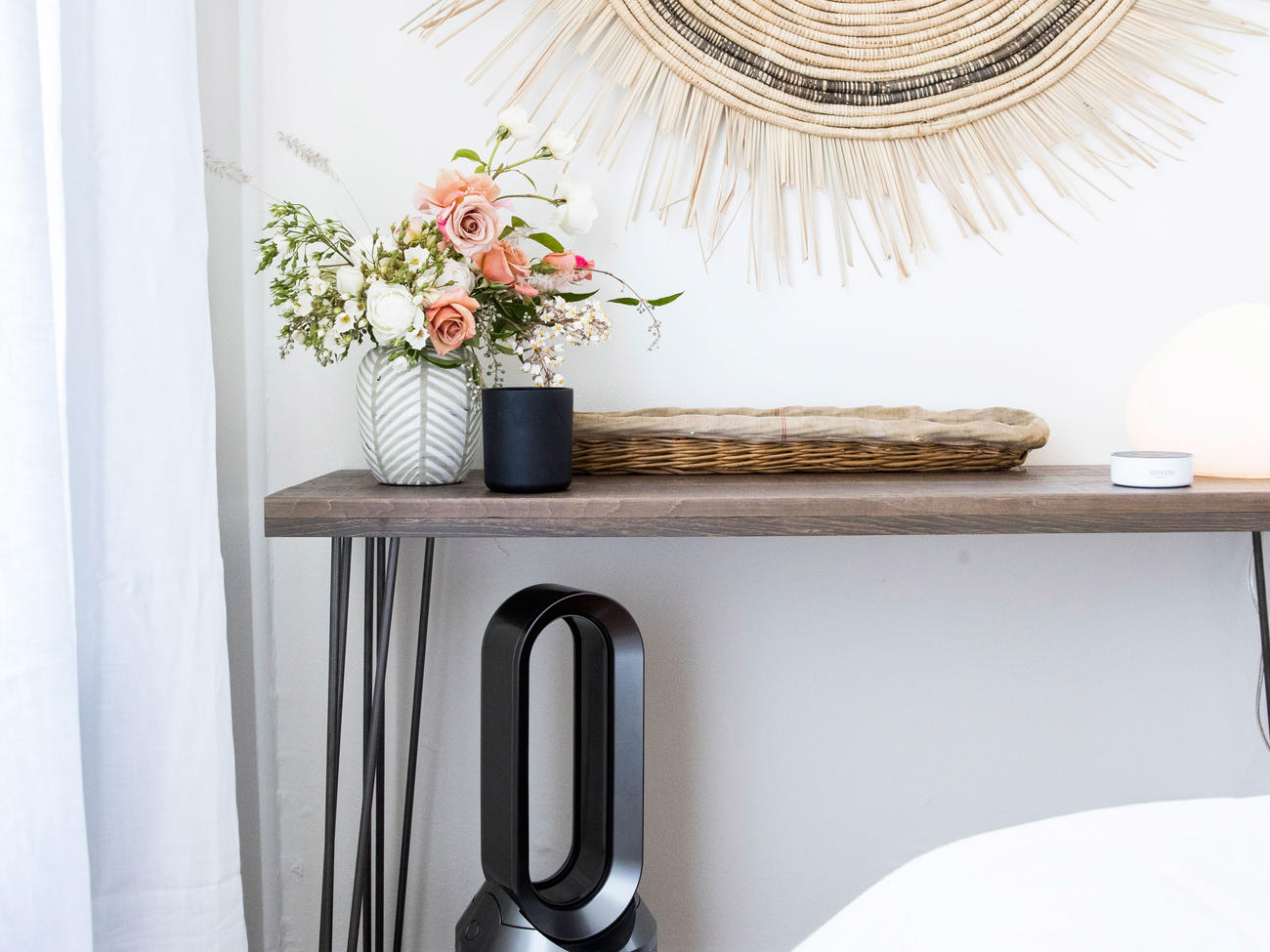
9 Ways to Improve the Indoor Air Quality of Your Home
Everyday tips for detoxing the air in your home—because you’re worth it

The 2018 wildfires in Northern California brought unimaginable devastation and tragedy to the affected communities—and had far-reaching consequences. Wind carried the smoke and polluting debris particles to cities and towns more than 100 miles away from the fires’ epicenters, creating air quality so inhospitable that schools and businesses temporarily closed their doors to urge people to stay at home and out of the detrimental air.
During the ensuing weeks of poor air quality, some people sought solace in far-flung places unaffected by the smoke. Those who didn’t have the means or time to get away did what they could to cope, from spending as little time outside as possible to ordering big-ticket home air purifiers online (many local hardware stores sold out of such devices all too quickly). Once the fires were contained and the smoke cleared, people settled into the somber resignation that such events are likely to occur again in the future.
However, it doesn’t take a catastrophic natural event such as a wildfire to contaminate the air indoors. Some of the most mundane tasks, such as cooking, burning certain types of candles, and using space heaters can contribute to the creation of difficult-to-detect yet easy-to-inhale fine dust particles that, over time, can be detrimental to one’s respiratory health—not to mention mold, bacteria, pet hair and dander, outdoor allergens, and more substances that can accumulate over time and contribute to your indoor air quality.
Tips for Keeping the Air in Your Home Clean
Follow this advice to help reduce the creation of fine dust particles in the home and protect oneself should there be a spike in outdoor air pollution where you live.
1. Sure, you might like letting in a breeze, but think about what that might be tracking into your home. Keep windows and doors closed as much as possible. Also, check your home’s air intake vents to ensure that they are not letting air inside.

2. We’re always in favor of hacks that do the hard work for us, and this one’s a no-brainer. Set up an air purifier (or multiple units if you have a large home). These devices work overtime to detox the air by passing it through a filter that removes harmful particles. HEPA (High Efficiency Particulate Air) filters are quite common and meet a Department of Energy standard for particle removal. See our guide to air purifiers for the best ones to buy.
3. If your home has ceiling fans, set them to spin counter-clockwise, which pulls hot air up rather than letting it settle its particles around you.
4. Wipe down surfaces on the regular to prevent excess dust and particles from accumulating on furniture. All it takes is a few minutes out of your latest Netflix binge to support this cleaning habit (or better yet, dust while watching).

5. Lean on nature’s helpers! On top of adding an oxygen boost, these 10 houseplants naturally clean the air in your home.
6. Natural gas, propane, and wood-burning stoves release contaminants, so keep cooking time to a minimum. Think about mixing main-dish salads or other no-cook recipes into your rotation so you don’t rely on your stove or oven every day.

7. Instead of paraffin candles, which are petroleum-based and do not burn clean, opt for beeswax and soy candles, which don’t pollute the air. (P.S. We love the beeswax tapers pictured above, available at Food52 in a number of colors).
8. This one’s a no-brainer: Avoid any type of burning fuels.
9. For those who are stocked with emergency preparedness kits, you might already have N95 or N99 masks—these are the safest types to wear whenever outside during periods of poor air quality (of course, during such times, limit your time outdoors as much as possible). Don’t already have some? Don’t wait until wildfire season to buy some—if the air gets bad enough, your local hardware stores will sell out quickly and by the time you’ve received an online shipment you’ll have already been exposed for a day or more. They’re typically available on Amazon.
And it goes without saying that if the air quality in your area is just too atrocious, even indoors, consider taking an impromptu trip out of town or even reaching out to friends or family in a healthier location to see if you can visit for a spell. Even a couple days away can do wonders for your lungs.
